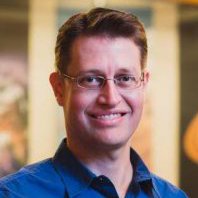All Activity
- Last week
-
Hi everyone,☺️ I'm currently working on a project that requires high-resolution Digital Elevation Model (DEM) data. I've been trying to download this data from the GeoWeb portal, but I'm running into some difficulties. Specifically, any dataset larger than 1GB seems to be causing problems. The downloads either stop unexpectedly or the files become corrupted. I’ve already tried using different browsers and internet connections, but the issue persists. Has anyone else encountered similar problems when downloading large files from GeoWeb? If so, how did you resolve them? Are there any specific settings or tools that could help ensure a successful download? I also check this: https://geoweb.rsl.wustl.edu/community/index.php?/topic/2026-high-resolutilookeron-dem-of-lunar-south-polar-region/ But I have not found any solution. Could anyone suggest the best solution. Any advice or suggestions would be greatly appreciated. Thanks in advance!🥰 Respected community member😇
-
Hello @Sehaj 😇 The following procedures can be used to create surface temperature maps of the day and night using THEMIS Projected Brightness Products From the planetary data system get the THEMIS PBT products. PBT data should be processed and verified using programs. Make sure that; if required; you convert brightness temperatures to surface temperatures. With GIS software; collect relevant information from the PBT files to build day and night surface temperature maps. Examine maps taken during the day and at night to track variations in temperature and thermal resistance.
- Earlier
-
The CLPS Peregrine Lunar Lander (TO2-AB) Data are now online. Visit https://pds-geosciences.wustl.edu/missions/clps/index.htm for details. Note: The LETS data at the PPI node is released "certified with liens". The PITMS data at the ATM node is still undergoing peer review and will be available online at a later date.
-
Hi, Are you reading the 3D data from Mercury and Venus? The product labels (e.g., *.lbl file for PDS3 products and *.XML file for PDS4 products) include the description of the data products. The product SIS file is also a good resource for users. If you provide more information about the data you are working on, I can assist you further. Thanks, June
-
3D height maps(spheres) of the two planets. The importer is done aside from reading in the data in the correct order. Sadly, I have no way of knowing how the information is ordered in the various .IMG files.
-
shubham1313 joined the community
-
parker66 joined the community
-
aarthy joined the community
-
osvaldobaxter joined the community
-
July 7, 2024 – MRO HiRISE Updates - MRO HiRISE EDR, RDR, DTM and Anaglyph data products released through June 4, 2024 (Orbit 83699) New data available through below links ODE product search page: https://ode.rsl.wustl.edu/mars/productsearch ODE map search page: https://ode.rsl.wustl.edu/mars/mapsearch ODE data holdings page: https://ode.rsl.wustl.edu/odeholdings/Mars_holdings.html
-
July 3, 2024 - Mars Odyssey Release 88 Data Updates - Loaded NS and HEND raw and derived data into ODE from October 1, 2023, through December 31, 2023 - Updated THEMIS standard raw (IREDR, VISEDR), calibrated (IRRDR, VISRDR), derived (IRBTR, VISABR) data products from August 30, 2023 to November 29, 2023 - Updated THEMIS Projected Data Products volume (ODTGEO), including special projected (IRGEO2, VGEO2) and projected derived (IRPBT2, VISALB) data products from August 30, 2023, through November 29, 2023 Note: Starting with RELEASE_ID=0088 (orbit 96300), all new IR-GEO cube files will be published without ZIP compression in order to comply with PDS4 data standards. There is no change to the algorithms nor ISIS3 processes used to generate the data in the uncompressed files. See more information in errata.txt. New data available through below links ODE product search page: https://ode.rsl.wustl.edu/mars/productsearch ODE map search page: https://ode.rsl.wustl.edu/mars/mapsearch ODE data holdings page: https://ode.rsl.wustl.edu/odeholdings/Mars_holdings.html
-
A new database has been added to the PDS Geosciences Node Spectral Library. Frankenspectra Database Bundle - A SSERVI funded project to analyze, using reflectance spectroscopy, 27 fine-particulate (less than 10-um) terrestrial minerals to create a far-UV through MIR single spectrum built from the best pieces of spectra acquired at multiple US and international labs. https://pds-speclib.rsl.wustl.edu/
-
hassan joined the community
-
Daniel Politte started following Mars Odyssey Release 88
-
Mars Odyssey Release 88 includes new GRS data. The new Raw data (EDR), Derived Neutron Data (DND), and Derived HEND Data (DHD) products cover the period 01 Oct 2023 through 31 Dec 2023. The new Averaged Neutron Data (AND) products cover the period 19 Oct 2023 to 13 Jan 2024, which is Ls=135 to 180 in Odyssey mapping year 12. The new Averaged HEND Data (AHD) products cover the period 18 Sep 2023 to 13 Jan 2024, which is Ls=120 to 180 in Odyssey mapping year 12. The data are online at the PDS Geosciences Node at http://pds-geosciences.wustl.edu/missions/odyssey/grs.html.
-
July 1, 2024 Updated Diviner RDR query tool database from December 16, 2023 to March 15, 2024
-
June 25, 2024 Updated Diviner RDR products from December 16, 2023 to March 15, 2024 In Progress Diviner RDR query tool database from December 16, 2023 to March 15, 2024
-
June Wang started following ODE - LRO Release 58 Loaded into ODE
-
June 18, 2024 - LRO Release 58 has been loaded into ODE. Updated LEND EDR_SCI, EDR_HK, RDR_RSCI, and RDR_CHK products from December 15, 2023 to March 14, 2024 Updated LEND RDR_DLD and RDR_DLX products from September 15, 2023 to December 3, 2023 Updated LAMP EDR and RDR products from June 15, 2023 to March 14, 2024 Updated Diviner EDR products from December 16, 2023 to March 15, 2024 Updated LROC EDR, CDR and RDR products from February 16 to March 15, 2024 Updated LOLA EDR and RDR products from October 31, 2023 to March 19, 2024 Note: Release of Diviner RDR data is delayed. ODE product search page: https://ode.rsl.wustl.edu/moon/productsearch ODE map search page: https://ode.rsl.wustl.edu/moon/mapsearch ODE data holdings page: https://ode.rsl.wustl.edu/odeholdings/Moon_holdings.html
-
Jennifer Ward started following LRO Release 58
-
Release 58 of Lunar Reconnaissance Orbiter data is now online at the Geosciences Node. This release includes new data acquired between December 15, 2023, and March 14, 2024, for most data sets. Data can be reached from the Geosciences Node LRO page. The Lunar Orbital Data Explorer allows searching and downloading of LRO data.
-
June 12, 2024 Release of PDS4-migrated Clementine Reduced Bistatic Radar data bundle (https://pds-geosciences.wustl.edu/lunar/urn-nasa-pds-clementine1_bistatic/) at the PDS Geosciences (https://pds-geosciences.wustl.edu/) Node are loaded into ODE. The original PDS3 data volumes could be accessed from below links. https://pds-geosciences.wustl.edu/lunar/clem1-l-rss-5-bsr-v1/ ODE product search page: https://ode.rsl.wustl.edu/moon/productsearch ODE map search page: https://ode.rsl.wustl.edu/moon/mapsearch ODE Moon Holdings - https://ode.rsl.wustl.edu/odeholdings/moon_holdings.html
-
- ode
- pds4-migrated
- (and 4 more)
-
The Orbital Data Explorer Team is pleased to announce the release of the map search upgrade. We have upgraded the interface to the latest version of the ESRI ArcGIS Maps JavaScript API. The update includes performance improvements and slight look updates for the map search features. Please report any questions to us at ode@wunder.wustl.edu. Mars ODE Map Search: https://ode.rsl.wustl.edu/mars/mapsearch Lunar ODE Map Search: https://ode.rsl.wustl.edu/moon/mapsearch Mercury ODE Map Search: https://ode.rsl.wustl.edu/mercury/mapsearch Venus ODE Map Search: https://ode.rsl.wustl.edu/venus/mapsearch
-
June 5, 2024 - MRO Release 69 Loaded into ODE. - Updated raw gravity data products released from February 1 through April 30, 2024. - Updated SHARAD Radargram data products from the SHARAD Science Team released from August 13 through November 4, 2023 (orbits 79901- 80973). - Updated SHARAD Cluttergram Simulations data products from May 11 through November 4, 2023. - Updated MCS EDR, RDR and DDR data products released through January 31, 2024 (orbits through 82106). - Updated CTX EDR data products released through November 6, 2023 (orbits through 80991). - Updated HiRISE EDR, RDR, DTM and anaglyph data products released through May 3, 2024 (orbits through 83299). Note: SHARAD EDRs and RDRs from SHARAD Operations from releases 67-69 are delayed. New data available through below links ODE product search page: https://ode.rsl.wustl.edu/mars/productsearch ODE map search page: https://ode.rsl.wustl.edu/mars/mapsearch ODE data holdings page: https://ode.rsl.wustl.edu/odeholdings/Mars_holdings.html
-
- mro
- release 69
-
(and 7 more)
Tagged with:
-
Wholesale T-Shirts Philade changed their profile photo
-
Jennifer Ward started following MRO Release 69
-
Updated CaSSIS Raw data with observation range from 2016-04-07 to 2023-10-31 (Orbit Range 0-26492)
- 1 reply
-
- ode
- esas exomars trace gas orbiter
-
(and 3 more)
Tagged with:
-
June Wang started following ODE – LRO LROC Release 58B Loaded into ODE
-
May 14, 2024 - LRO LROC Release 58B has been loaded into ODE. - Loaded LRO LROC EDR, CDR, and RDR data products released from 2024-1-16 to 2024-02-15 New data available through below links ODE product search page: https://ode.rsl.wustl.edu/moon/productsearch ODE map search page: https://ode.rsl.wustl.edu/moon/mapsearch ODE data holdings page: https://ode.rsl.wustl.edu/odeholdings/Moon_holdings.html
-
May 7, 2024 – MRO HiRISE Updates - MRO HiRISE EDR, RDR, DTM and Anaglyph data products released through April 2, 2024 (Orbit 82899) New data available through below links ODE product search page: https://ode.rsl.wustl.edu/mars/productsearch ODE map search page: https://ode.rsl.wustl.edu/mars/mapsearch ODE data holdings page: https://ode.rsl.wustl.edu/odeholdings/Mars_holdings.html
-
May 3, 2024 - ESA's ExoMars Trace Gas Orbiter ACS (Atmospheric Chemistry Suite), CaSSIS (Colour and Stereo Surface Imaging System) and NOMAD (Nadir and Occultation for MArs Discovery) data, updated through April 30, 2024, is now accessible in ODE - Updated ACS raw housekeeping data with observation range from 2016-03-14 to 2023-10-29 (Orbit Range 2- 26468) - Updated NOMAD raw data with observation range from 2016-04-04 to 2023-10-31 (Orbit Range 0- 26492) - Updated NOMAD partially processed data with observation range from 2016-04-04 to 2023-10-31 (Orbit Range 0- 26492) - Updated NOMAD Calibrated data with observation range from 2018-04-21 to 2023-10-29 (Orbit Range 1829- 26456) - Updated CaSSIS Partially processed data with observation range from 2016-03-14 to 2023-10-31 (Orbit Range 1-26492) - Updated CaSSIS Calibrated data with observation range from 2018-04-14 to 2023-04-15 (Orbit Range 0-24055) In Progress CaSSIS Raw data with observation range from 2016-04-07 to 2023-10-31 (Orbit Range 0-26492) New data available through below links ODE product search page: https://ode.rsl.wustl.edu/mars/productsearch ODE map search page: https://ode.rsl.wustl.edu/mars/mapsearch ODE data holdings page: https://ode.rsl.wustl.edu/odeholdings/Mars_holdings.html
- 1 reply
-
- ode
- esas exomars trace gas orbiter
-
(and 3 more)
Tagged with:
-
April 15, 2024 - New Extended Mission 9 MEX Visual Monitoring Camera (VMC) Data Loaded into ODE - Loaded MEX VMC EDR & RDR data products released through June 30, 2023 (Orbit 24618). ODE product search page: https://ode.rsl.wustl.edu/mars/productsearch ODE data holdings page: https://ode.rsl.wustl.edu/odeholdings/Mars_holdings.html
-
April 15, 2024 - LRO LROC Release 58A has been loaded into ODE. - Loaded LRO LROC EDR and CDR data products released from 2023-12-16 to 2024-01-15 New data available through below links ODE product search page: https://ode.rsl.wustl.edu/moon/productsearch ODE map search page: https://ode.rsl.wustl.edu/moon/mapsearch ODE data holdings page: https://ode.rsl.wustl.edu/odeholdings/Moon_holdings.html
-
April 8, 2024 – MRO HiRISE Updates - MRO HiRISE EDR, RDR, DTM and Anaglyph data products released through March 2, 2024 (Orbit 82499) New data available through below links ODE product search page: https://ode.rsl.wustl.edu/mars/productsearch ODE map search page: https://ode.rsl.wustl.edu/mars/mapsearch ODE data holdings page: https://ode.rsl.wustl.edu/odeholdings/Mars_holdings.html



